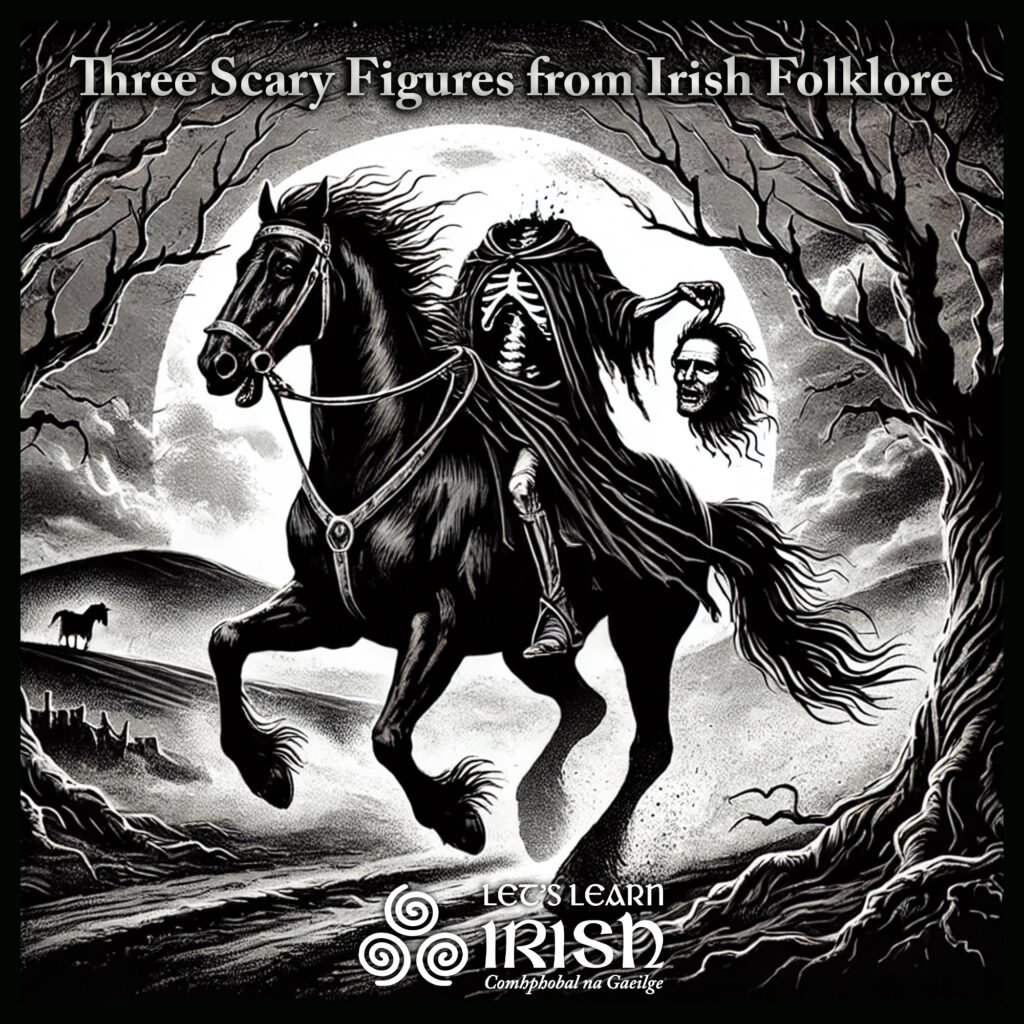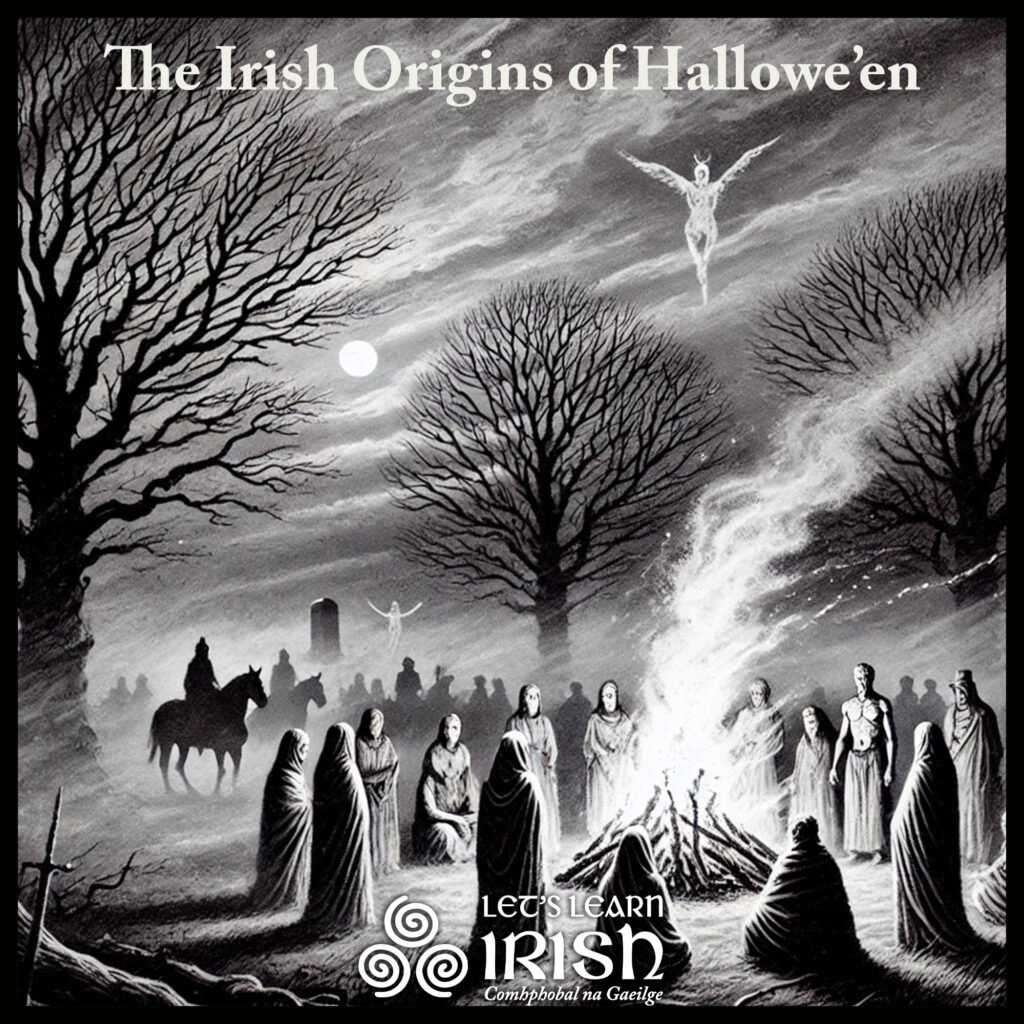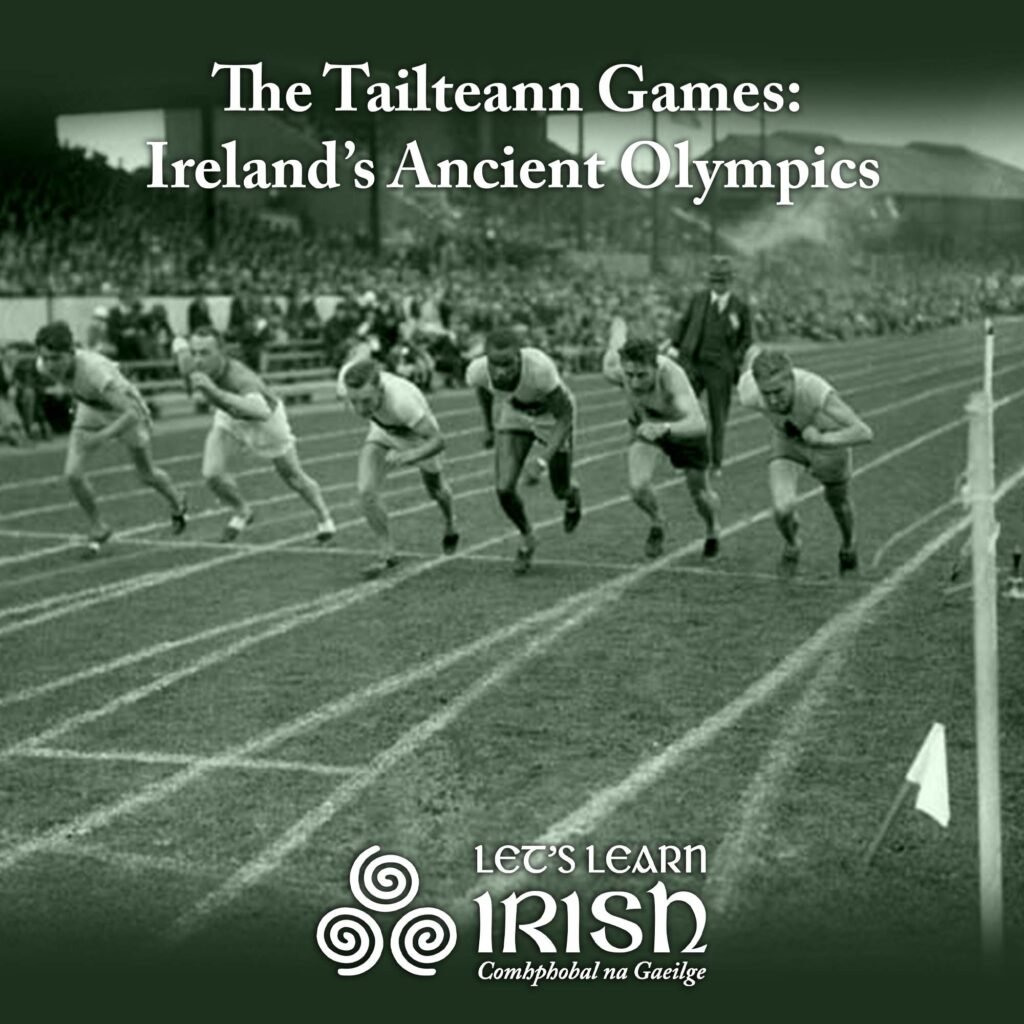An Bhean Sí – the Story of the Banshee in Irish Folklore
It is little wonder that Ireland is where Hallowe’en originated. As a celebration originally marking the relationship to other-worldly spirits, it is part of the country’s past rife with liaisons with supernatural beings, from gods to fairies to warriors with preternatural powers. Paramount among these figures may be an bhean sí (the banshee), one of the most enduring Celtic beliefs in Ireland.
Origins of the word 'Banshee'
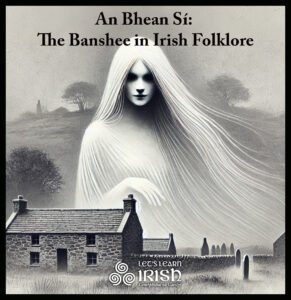 Where does the word ‘banshee’ actually come from? Learners of Irish will no doubt recognize the word ‘bean’ as the Irish word for “woman”. ‘Sí’ (or ‘sídhe’ in old Irish) refers to “fairy” or “fairy mound”. Thus, the anglicized ‘banshee’ refers to “a fairy woman” or “woman of the fairy mound”. Because this is a feminine word, we add a séimhiú (h) when using the definite article—’an bhean sí’.
Where does the word ‘banshee’ actually come from? Learners of Irish will no doubt recognize the word ‘bean’ as the Irish word for “woman”. ‘Sí’ (or ‘sídhe’ in old Irish) refers to “fairy” or “fairy mound”. Thus, the anglicized ‘banshee’ refers to “a fairy woman” or “woman of the fairy mound”. Because this is a feminine word, we add a séimhiú (h) when using the definite article—’an bhean sí’.
The banshee was a harbinger of death, announcing the loss—or future loss—of a loved one, usually through her shrieking cry. This mystical female image has been a part of Irish culture for many centuries, with the oldest surviving account tracing back to 1380. The lore of the banshee varied per region in Ireland, but traditionally many of the ancient families had a particular banshee assigned to them. Only the deaths of very important people elicited more than one banshee to wail. The figure of the banshee is associated with the practice of keening, which was part of burial rites in both Ireland and Scotland until the 19th century.
How to Recognize a Bhean Sí
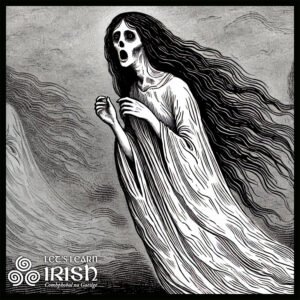 The appearance of the banshee varies, from the figure of a young virgin who sings sweetly and combs her hair, to an old haggard woman in a shrouded cloak. Some legends suggest that the look of an bhean sí depends on whether she is a friend of the deceased and their family, or if she harbors hateful feelings. This may indicate if an banshee has arrived to gently accompany the departed into the next world, or to delight in their suffering.
The appearance of the banshee varies, from the figure of a young virgin who sings sweetly and combs her hair, to an old haggard woman in a shrouded cloak. Some legends suggest that the look of an bhean sí depends on whether she is a friend of the deceased and their family, or if she harbors hateful feelings. This may indicate if an banshee has arrived to gently accompany the departed into the next world, or to delight in their suffering.
The cry of an bhean sí is often likened to a blood-curdling scream, as if a woman suffering a terrible death. In some accounts, it is piercing enough to shatter glass. Sometimes a banshee makes itself known by scratching at a window or creating a crashing sound. However, in instances in which the banshee is friendly, she may be swaying or chanting softly.
Banshees in Popular Culture
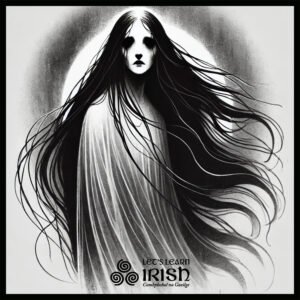 The term “banshee” has long been known outside of Ireland, if only by the phrase “to wail like a banshee.” For some, their first awareness of the term ‘banshee’ came with the 1970 British horror flick Cry of the Banshee, starring Vincent Price. In fact, the movie inspired the name of highly-influential British punk goths, Siouxsie And The Banshees. Other bands to use the term as a moniker include Banshee (American metal band formed in 1986), and The Banshees (another English band, created in 2018).
The term “banshee” has long been known outside of Ireland, if only by the phrase “to wail like a banshee.” For some, their first awareness of the term ‘banshee’ came with the 1970 British horror flick Cry of the Banshee, starring Vincent Price. In fact, the movie inspired the name of highly-influential British punk goths, Siouxsie And The Banshees. Other bands to use the term as a moniker include Banshee (American metal band formed in 1986), and The Banshees (another English band, created in 2018).
There are often fantastical figures called banshees that appear in science fiction literature and television. The stage-Irish Disney romp, ‘Darby O’Gill and the Little People‘ (1959), featuring a pre-fame Seán Connery, features a relatively scary banshee for a children’s movie in the pre-CGI era. Another example is in the American series Charmed, where these characters killed people with their screams. Typically, these banshees loosely, if it all, maintain the characteristics found in Irish folklore. Likely, the greatest awareness of the term comes from Martin McDonagh’s 2022 film The Banshees of Inisheerin. The movie received widespread acclaim and was nominated for nine Oscar awards. However, despite the title, no bean sí makes an appearance in the film, as one character suggests that there are no banshees on the island.
The Banshee and the Keening Woman
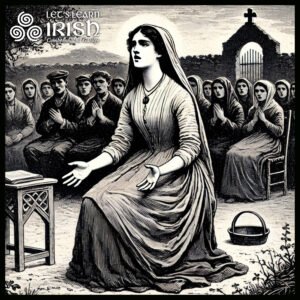 The figure of the banshee closely resembles the keening woman, or bean chaointe, who held an important role in real life funeral ceremonies in Ireland. The verb “to keen” comes from the Irish term caoineadh, meaning “to cry” or “to weep”. An bhean chaointe, (“the keening woman”) whether a family member or a professionally hired mourner, would sing a melodic lament to express her grief for the deceased. Although a handful of keening songs have survived from the past, generally the keening was improvised, mixing both words and non-words together in the lyrics. The very best keeners on the island would be in high demand. Because it is a Gaelic tradition, it occurred in both Irish and Scottish cultures.
The figure of the banshee closely resembles the keening woman, or bean chaointe, who held an important role in real life funeral ceremonies in Ireland. The verb “to keen” comes from the Irish term caoineadh, meaning “to cry” or “to weep”. An bhean chaointe, (“the keening woman”) whether a family member or a professionally hired mourner, would sing a melodic lament to express her grief for the deceased. Although a handful of keening songs have survived from the past, generally the keening was improvised, mixing both words and non-words together in the lyrics. The very best keeners on the island would be in high demand. Because it is a Gaelic tradition, it occurred in both Irish and Scottish cultures.
Both the bean chaointe and an bhean sí demonstrate the reverence Irish culture places on the death of a loved one, as well as the importance of the funeral process. Today, that custom continues, with Irish wakes that may last for days, and practices like stopping clocks at the time of death and having someone stay up all night with the deceased.
Learning Irish through Folklore
Appreciating the richness of Irish folklore is a great complement to learning the Irish language. It often provides the context for new words, and in the same way, offers a more complete understanding of Irish culture. For example, by knowing that an bhean sí translates as “the woman of the fairy mound,” it is easier to see how the figure of the banshee is also connected to tumuli, or ancient burial mounds—a point that is more easily forgotten in the English version.
Cultural awareness is a key part of language learning. When you connect Irish folklore to new vocabulary, for example, you are given an interesting and original context with which to better remember the words. Studying the Irish terms associated with the supernatural is a fun way to improve your fluency in the language (if you’re looking for vocabulary associated with Hallowe’en, check out this handy list). By developing a greater awareness of Irish culture, you also gain a deeper understanding of idiomatic expressions, gestures, and culturally-specific ways of communicating. This is one of the main reasons why learning in a live class setting with a teacher, with whom you can learn and ask questions, works so well for so many people.

The process of mourning has always had an elevated role in Irish society, a tradition that still continues today. Just as funerals of the past had designated mourners that vocally expressed their grief, so was a similar figure present in the folklore of Ireland. An bhean sí, both in its kindness or revenge, is part of a rich cultural and mythological history unique to Ireland. While the banshee isn’t directly connected to the tradition of Hallowe’en, it is still one of the most intriguing spirits in Irish folklore. The vast collection of stories about banshees in the National Irish Folklore Database demonstrates just how much the figure of the wailing woman was a part of their understanding of the world. After all, the ancient Celts understood that the boundary between the human and the spirit world is sometimes very thin.
Bígí páirteach!
Join the online Irish community at LetsLearnIrish.com.
Follow on social media @LetsLearnIrish.

